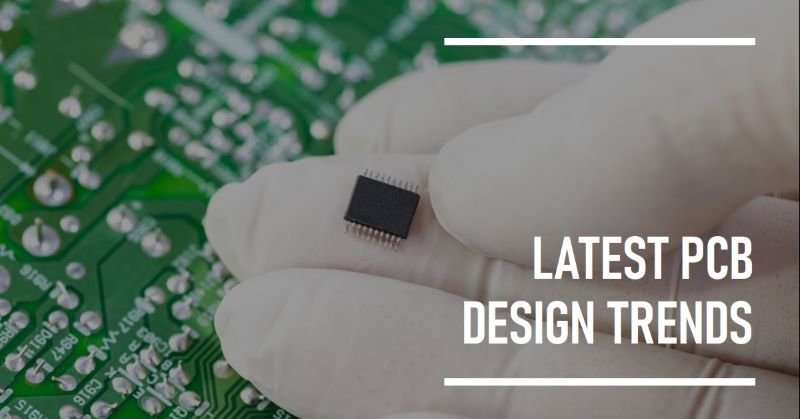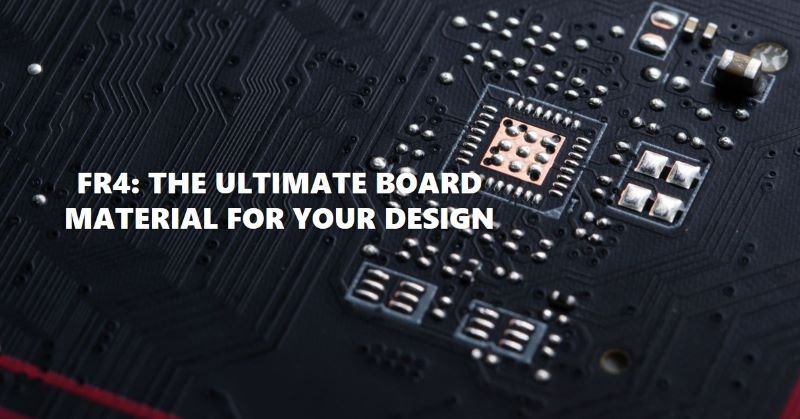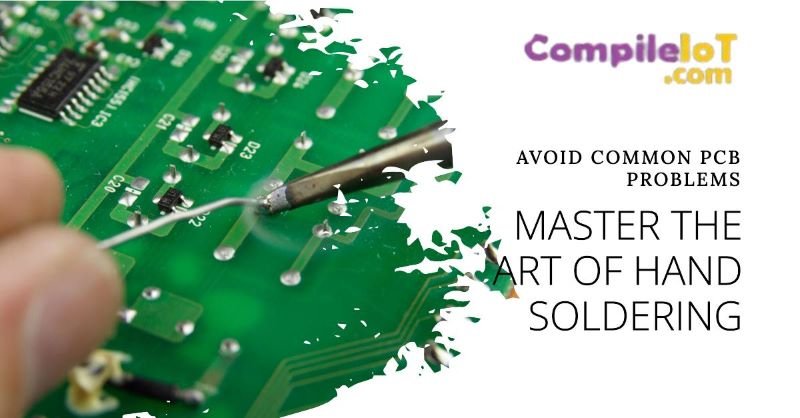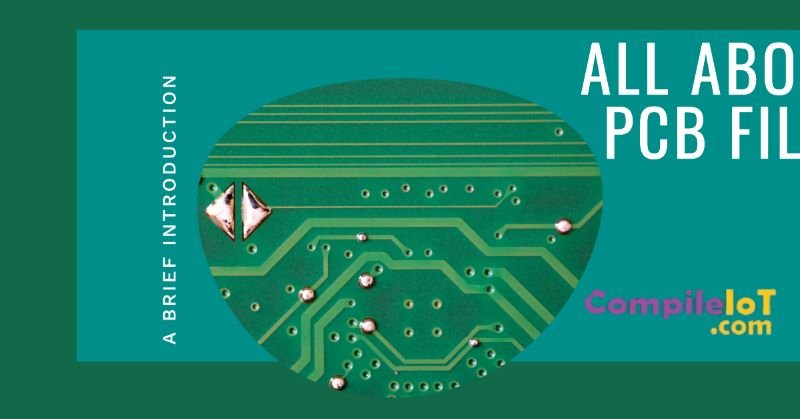What is High Frequency PCB? Everything You Need to Know
As technology advances, the demand for faster, more efficient electronic devices continues to grow. High Frequency PCBs have emerged as a critical component in this evolution, designed specifically to handle signals at frequencies typically above 1 GHz. These PCBs are essential in high-speed electronic circuits, such as those found in telecommunications, aerospace, and advanced medical devices, where precise signal transmission and minimal loss are paramount. High Frequency PCBs offer superior performance in terms of signal integrity, reducing noise and interference that can degrade the quality of high-speed signals. Their unique characteristics make them indispensable in applications where performance and reliability are non-negotiable.
What is a High Frequency PCB?
A High Frequency PCB is a type of printed circuit board designed to operate at high frequencies, generally above 1 GHz. These PCBs are engineered to support the rapid transmission of signals with minimal loss, making them ideal for high-speed digital, radio frequency (RF), and microwave applications. Unlike standard PCBs, High Frequency PCBs require specialized materials and precise design techniques to maintain signal integrity at these elevated frequencies.
Explanation of the Frequency Range that Qualifies as “High Frequency”
In the context of PCBs, “high frequency” typically refers to frequencies above 1 GHz. This range includes microwave frequencies (1 GHz to 30 GHz) and extends into millimeter-wave frequencies (30 GHz and above). At these high frequencies, the behavior of electrical signals changes significantly, requiring careful consideration of factors like impedance, signal loss, and electromagnetic interference (EMI). High Frequency PCBs are designed to manage these challenges, ensuring that signals can be transmitted with high fidelity.
Key Characteristics that Differentiate High Frequency PCBs from Standard PCBs
Several key characteristics set High Frequency PCBs apart from standard PCBs:
- Material Selection: High Frequency PCBs use specialized materials with low dielectric constants and low loss tangents to minimize signal loss and maintain signal integrity.
- Precision Design: The design of High Frequency PCBs requires precise control of trace widths, spacing, and layer stack-up to ensure proper impedance matching and signal integrity.
- Thermal Management: High Frequency PCBs often require advanced thermal management solutions to dissipate heat generated by high-speed signals.
- Manufacturing Tolerances: The manufacturing process for High Frequency PCBs demands tight tolerances to ensure that the physical dimensions of the traces and components align with the design specifications.
Materials Used in High Frequency PCBs
Common Materials (e.g., PTFE, Rogers, Polyimide)
High Frequency PCBs are made from materials that can support high-speed signal transmission with minimal loss and distortion. Common materials include:
- PTFE (Polytetrafluoroethylene): Known for its low dielectric constant and low loss tangent, PTFE is widely used in high-frequency applications.
- Rogers Materials: Rogers Corporation offers a range of laminates specifically designed for high-frequency applications, such as Rogers 4000 series, which provides excellent electrical performance and stability.
- Polyimide: While commonly used in flexible PCBs, Polyimide can also be used in high-frequency applications due to its good thermal stability and mechanical properties.
Importance of Selecting the Right Material Based on Dielectric Constant, Loss Tangent, and Thermal Properties
The choice of material in a High Frequency PCB is critical to its performance. The dielectric constant (Dk) of the material affects the speed at which signals propagate through the PCB. A lower Dk allows for faster signal transmission, which is essential in high-frequency applications. The loss tangent (Df) is another important factor; a lower Df reduces signal loss as the signal travels through the material. Thermal properties, such as the material’s ability to dissipate heat, are also crucial in preventing overheating and maintaining the PCB’s performance under high-frequency operation. Selecting the right material ensures that the PCB can handle high-speed signals without degradation, maintaining the integrity and reliability of the entire electronic system.
Design Considerations for High Frequency PCBs
Impedance Control
Impedance control is a critical aspect of High Frequency PCB design. At high frequencies, even small variations in impedance can cause signal reflections, leading to signal loss and distortion. To achieve precise impedance control, designers must carefully select the width, spacing, and layout of the PCB traces. Matching the impedance of the traces to the impedance of the connected components ensures that signals can travel smoothly across the PCB without encountering reflections or losses.
Signal Integrity and Noise Reduction
Maintaining signal integrity is essential in High Frequency PCBs, where any disruption can degrade performance. Designers must consider factors such as crosstalk, electromagnetic interference (EMI), and signal attenuation. Techniques like differential signaling, proper grounding, and shielding are employed to reduce noise and ensure that the signals remain clean and undistorted. Proper layout practices, such as minimizing trace lengths and avoiding sharp angles, also contribute to maintaining signal integrity.
Thermal Management
High-speed signals generate heat, which can affect the performance and reliability of the PCB. Effective thermal management is necessary to dissipate this heat and prevent it from accumulating in critical areas. Designers may use thermal vias, heatsinks, and materials with high thermal conductivity to manage heat. Proper thermal management ensures that the PCB operates within safe temperature limits, preventing thermal damage to components and maintaining consistent performance.
Layer Stack-Up and Trace Width Considerations
The layer stack-up and trace width are crucial design elements in High Frequency PCBs. The stack-up refers to the arrangement of the PCB layers, which affects impedance, signal integrity, and thermal performance. A well-planned stack-up can help achieve controlled impedance and reduce electromagnetic interference. Trace width and spacing must be carefully calculated to match the impedance requirements and minimize signal loss. In some cases, designers may use wider traces to reduce resistance and improve signal transmission. Proper consideration of these factors ensures that the PCB can handle high-frequency signals effectively.
Manufacturing Challenges of High Frequency PCBs
Precision in Material Selection and Handling
Manufacturing High Frequency PCBs presents unique challenges, starting with the precision required in material selection and handling. The materials used in these PCBs, such as PTFE and Rogers laminates, are sensitive to variations in temperature, pressure, and handling processes. Any deviation can impact the dielectric constant and loss tangent, leading to compromised signal integrity. Manufacturers must carefully control the environment in which these materials are stored and handled, ensuring that they remain within specified parameters throughout the production process.
Tolerance in Manufacturing Processes (Etching, Drilling, etc.)
The manufacturing processes for High Frequency PCBs, including etching, drilling, and plating, require exceptional precision. At high frequencies, even minute variations in trace width, spacing, or hole size can result in significant performance issues, such as impedance mismatches or increased signal loss. Achieving tight tolerances is essential to maintain the integrity of the PCB design. This demands advanced manufacturing equipment and techniques, such as laser drilling and precision etching, to produce the fine features required by high-frequency circuits.
Quality Control and Testing for High Frequency Performance
Quality control and testing are critical steps in the manufacturing of High Frequency PCBs. Standard testing methods may not be sufficient to identify potential issues in high-frequency applications. Specialized testing, such as Time Domain Reflectometry (TDR) and Vector Network Analysis (VNA), is often required to assess impedance control, signal integrity, and overall performance at the desired frequencies. These tests help ensure that the PCB meets the stringent requirements for high-frequency operation and can perform reliably in its intended application. Rigorous quality control processes are essential to detect any defects early in the production cycle, reducing the risk of costly rework or failure in the field.
Applications of High Frequency PCBs
Telecommunications (e.g., RF Circuits, Antennas)
High Frequency PCBs are integral to the telecommunications industry, where they are used in radio frequency (RF) circuits, antennas, and other high-speed communication devices. These PCBs enable the rapid transmission of data over long distances with minimal loss and interference, making them essential for cellular networks, satellite communications, and wireless technologies. The ability to handle high-frequency signals with precision and reliability is crucial for maintaining the performance and efficiency of modern communication systems.
Aerospace and Defense
In the aerospace and defense sectors, High Frequency PCBs are used in radar systems, avionics, and military communication devices. These applications demand exceptional reliability and performance in challenging environments, such as extreme temperatures, high vibrations, and electromagnetic interference. High Frequency PCBs are designed to withstand these conditions while providing the high-speed signal processing required for radar detection, navigation, and secure communication. Their ability to maintain signal integrity under harsh conditions makes them indispensable in critical defense applications.
Medical Devices
High Frequency PCBs play a vital role in advanced medical devices, including imaging equipment, diagnostic tools, and wearable health monitors. These devices often require precise, high-speed data transmission to function effectively, whether it’s capturing high-resolution images or transmitting real-time patient data. High Frequency PCBs enable the accurate processing of signals in medical applications, ensuring that devices operate with the precision needed for diagnosis and treatment. Their reliability and performance are critical to the safety and effectiveness of medical technologies.
Automotive Radar Systems
In the automotive industry, High Frequency PCBs are used in radar systems that support advanced driver assistance systems (ADAS) and autonomous vehicles. These radar systems operate at high frequencies to detect objects, measure distances, and provide real-time data to the vehicle’s control systems. The PCBs must deliver fast, accurate signal processing to enable features such as adaptive cruise control, collision avoidance, and lane-keeping assistance. High Frequency PCBs contribute to the safety and functionality of modern vehicles, playing a key role in the development of autonomous driving technologies.
Advantages and Disadvantages of High Frequency PCBs
Advantages: High Speed, Low Signal Loss, Better Performance in High-Frequency Applications
High Frequency PCBs offer several advantages that make them ideal for high-speed and high-frequency applications:
- High Speed: These PCBs are designed to support rapid signal transmission, making them essential in applications where data must be processed quickly and accurately.
- Low Signal Loss: The specialized materials and design techniques used in High Frequency PCBs minimize signal loss, ensuring that signals remain strong and clear even at high frequencies.
- Better Performance in High-Frequency Applications: High Frequency PCBs provide superior performance in environments where maintaining signal integrity and reducing interference are critical, such as telecommunications, aerospace, and medical devices.
Disadvantages: Higher Cost, Complex Design and Manufacturing, Limited Material Availability
Despite their advantages, High Frequency PCBs also present some challenges:
- Higher Cost: The specialized materials and precision manufacturing processes required for High Frequency PCBs result in higher costs compared to standard PCBs.
- Complex Design and Manufacturing: Designing and manufacturing High Frequency PCBs is more complex, requiring advanced knowledge of RF design principles and access to specialized equipment. This complexity can lead to longer lead times and higher development costs.
- Limited Material Availability: The materials suitable for High Frequency PCBs, such as PTFE and certain Rogers laminates, are less common and may have limited availability, which can affect production schedules and costs.
Conclusion
High Frequency PCBs are crucial in today’s fast-paced technological landscape, enabling the development of high-speed, high-performance electronic devices. From telecommunications to aerospace, medical devices to automotive systems, these PCBs provide the foundation for advanced applications that require precise and reliable signal processing.
As technology continues to evolve, the demand for High Frequency PCBs is expected to grow. Innovations in materials, design techniques, and manufacturing processes will likely lead to even higher frequencies and improved performance. Emerging applications, such as 5G networks, IoT devices, and autonomous vehicles, will drive further advancements in High Frequency PCB technology.








